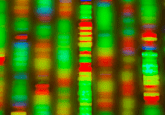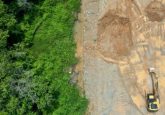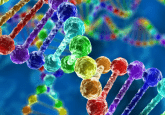Ancient DNA – modern methods of extraction

Researchers have developed a new method to prepare bone powder for ancient DNA extraction. The method outperformed previous techniques of decontaminating ancient bones.
Researchers from Max Planck Institute for Evolutionary Anthropology (Leipzig, Germany) have developed a novel method for separating ancient DNA into multiple fractions during DNA extraction. The method outperformed previous techniques of decontaminating ancient bones. The new extraction method expands the variety of methods available for depleting contaminant DNA from ancient skeletal remains and highlight the never-ending search for the optimal way to obtain DNA from ancient materials.
Ancient DNA has the potential to allow the genetic history of past species and populations to be examined. However, there are technical challenges associated with the retrieval of DNA from ancient bones and teeth – one of these challenges is contamination with modern human and microbial DNA. Often, more than 99% of DNA that is recovered is contaminated. This complicates the identification of sequences from endogenous ancient molecules and makes the generation of genome-wide sequence data difficult.
In this study the authors used two late Pleistocene bones, one from a whale bone from the bottom of the North Sea and one bovid bone from Denisova Cave in southern Siberia for their proof-of-principle experiment.
The authors describe a method that uses a series of incubation steps in sodium phosphate buffer at temperatures ranging between room temperature and 90°C- allowing a slow release of DNA from sample powder. The temperature gradient is followed by a room-temperature incubation period of the sample powder in a digestion buffer. The total yield of endogenous ancient DNA and its proportion in the DNA extract can be determined using single-stranded DNA library preparation.
“These results suggest that serial temperature-controlled sodium phosphate pre-treatment enables the recovery of DNA fractions that differ substantially in their content of endogenous and contaminant DNA, and the patterns of DNA release vary greatly among samples.” Explained lead author Elena Essel (Max Planck Institute for Evolutionary Anthropology).
The authors also tested whether the gradual DNA extraction method provided advantages over three previously described methods (predigestion, room-temperature phosphate treatment and bleach treatment) on three samples, including a bone fragment from a 230,000-year-old straight-tusked elephant from Weimar-Ehringsdorf.
“A particular advantage of gradual DNA extraction over bleach treatment is that it does not lead to the destruction of endogenous DNA. The method may therefore be suitable for combining DNA extraction and decontamination for material that is too precious for repeated sampling.” concluded Essel.
To determine whether the improvements are great enough to make this method a primary choice for decontaminating ancient teeth and bones, larger sample sets are required to make comparisons across.





